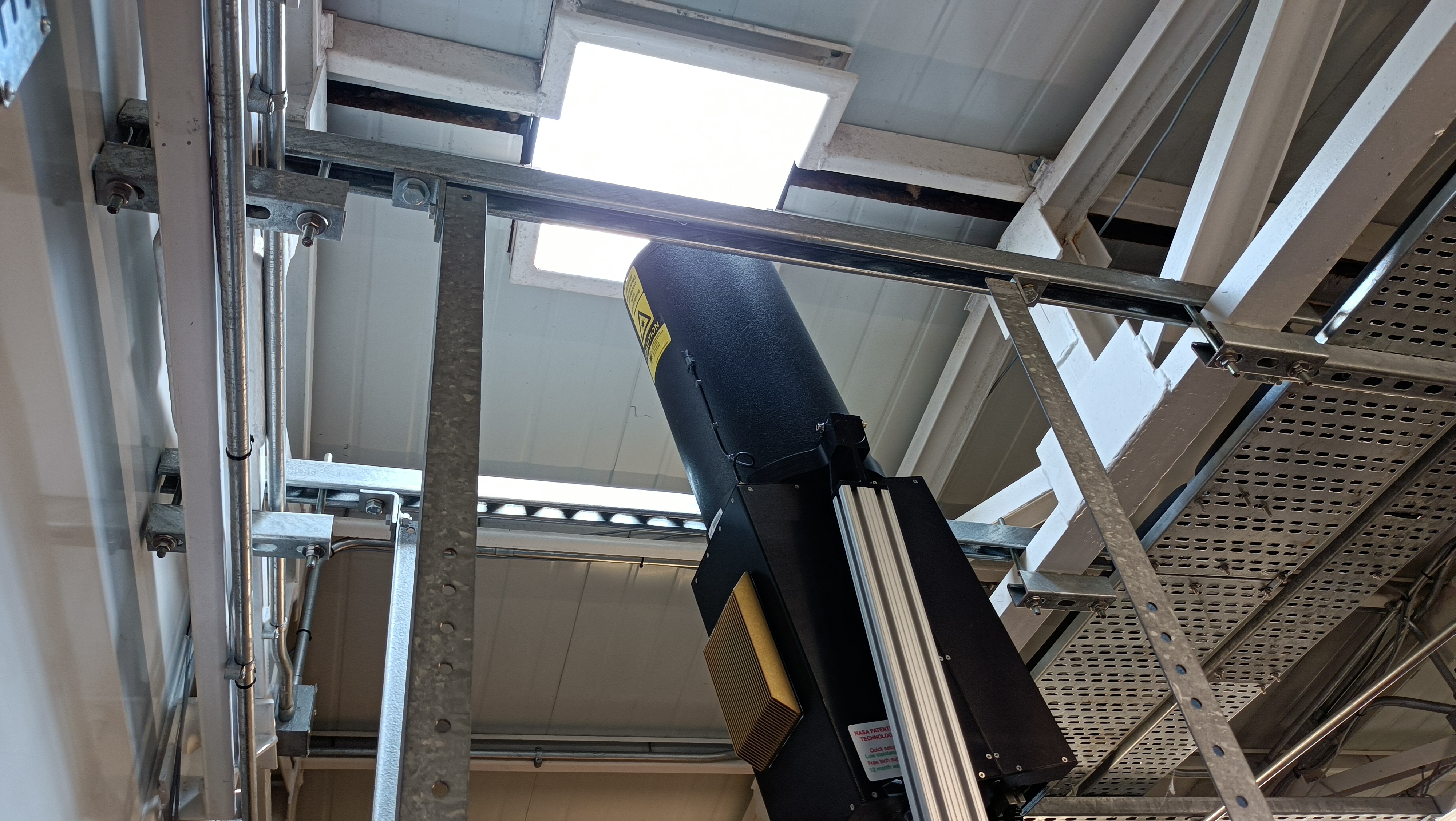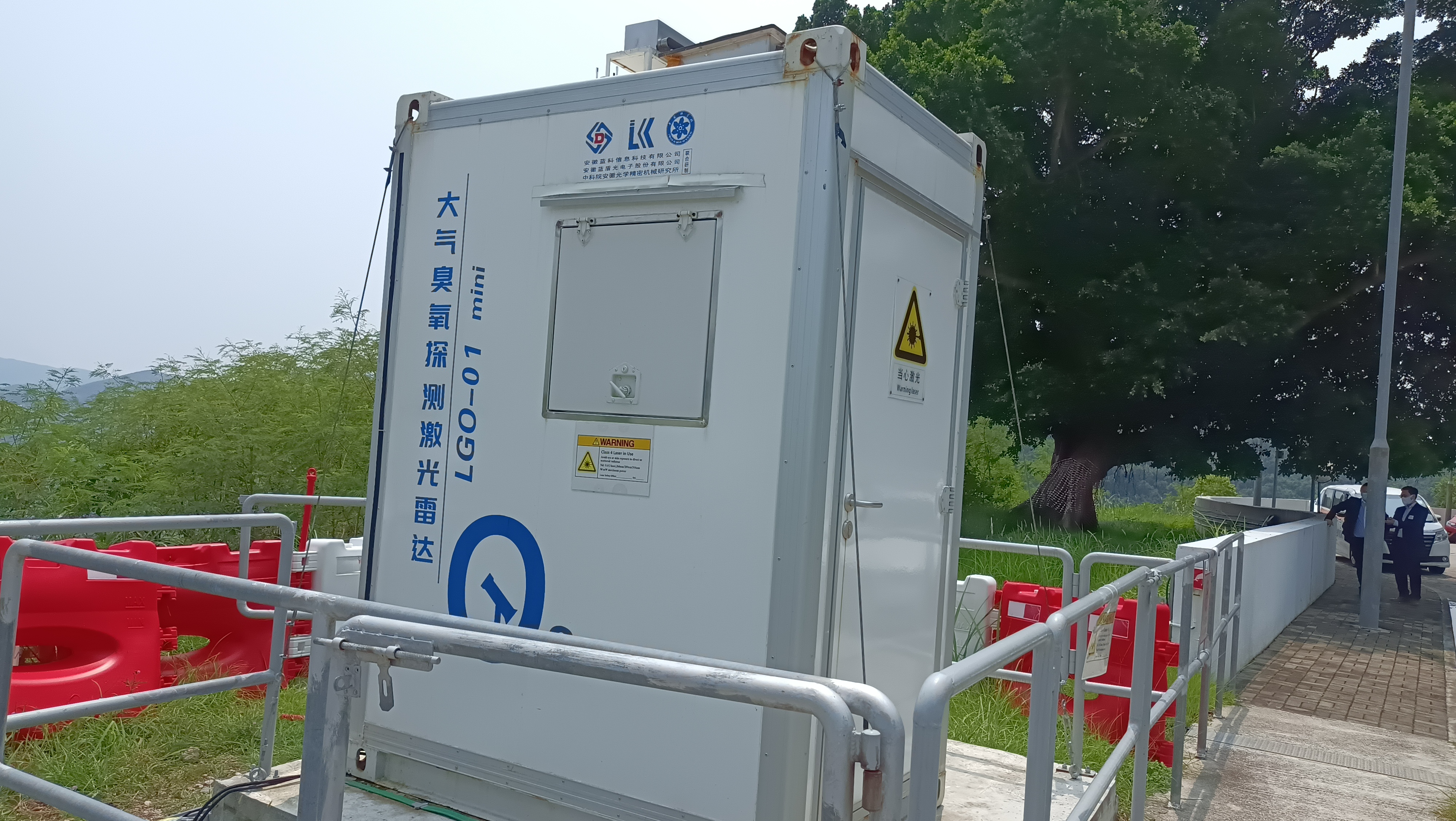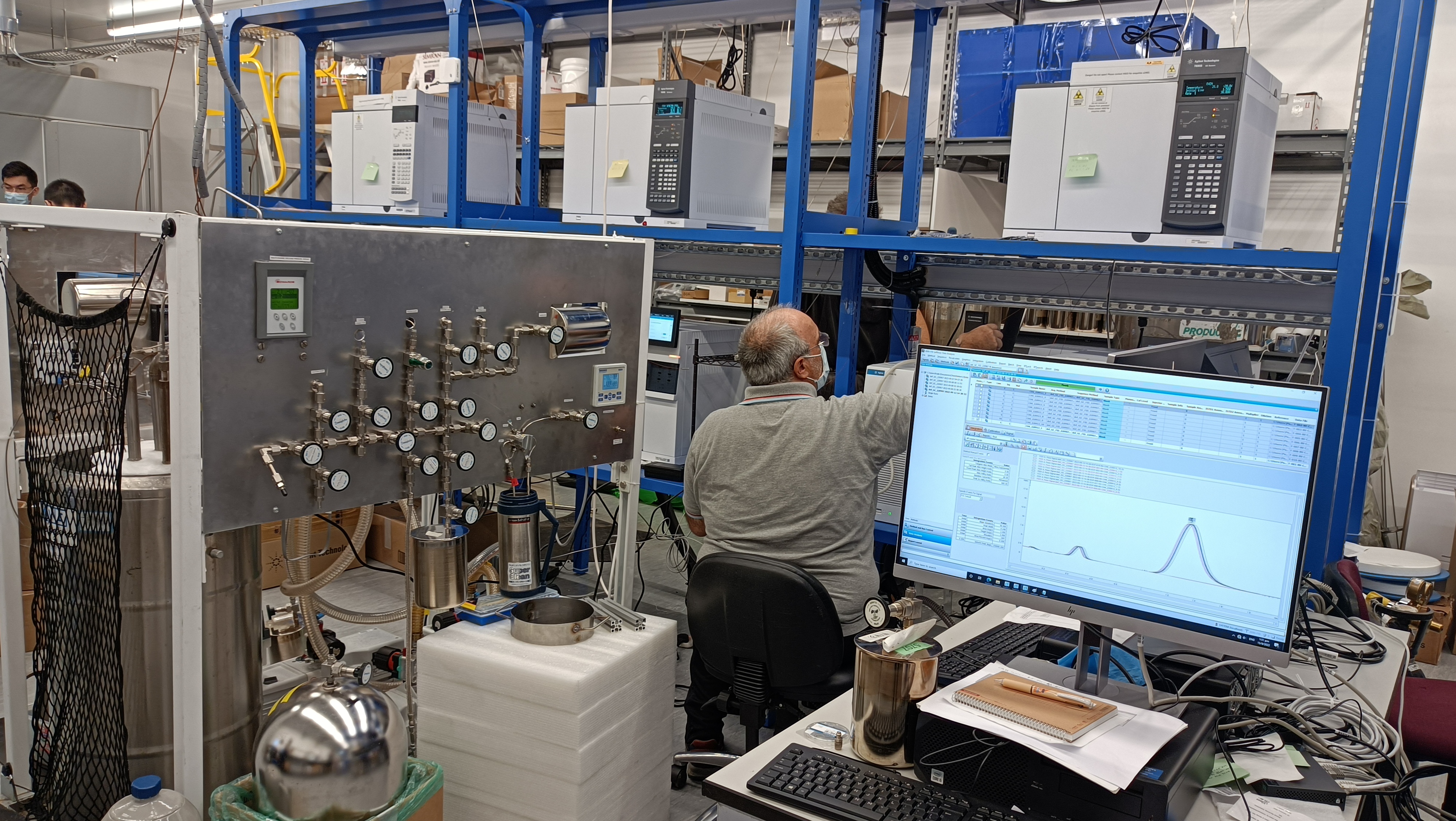Joint Government and Academia efforts to Study and Develop Science-based Regional Ozone and Photochemical Smog Control Strategies
[HONG KONG, 19 September 2022] - The Hong Kong University of Science and Technology (HKUST)’s Institute for the Environment (IENV) and the HKSAR Environmental Protection Department (HKEPD) jointly held a press conference today to introduce the large-scale collaboration efforts to study and develop science-based regional ozone and photochemical smog control strategies” led by the HKEPD and conducted by atmospheric research teams from HKUST, The Chinese University of Hong Kong (CUHK), City University of Hong Kong (CityU) and The Hong Kong Polytechnic University (PolyU). This research collaboration effort also involves numerous international experts and atmospheric research teams including those in Guangdong and Macao.
The combination of multi-disciplinary expertise with cutting-edge technology is targeted for improving the quantitative understanding of different emission sources contributing to the formation of ozone and smog in the atmosphere, their transport pathways, and their enroute transformation processes over Hong Kong and the Guangdong-Hong Kong-Macao Greater Bay Area (GBA).
During the press conference, Prof. Alexis LAU, Director of the Institute for the Environment at HKUST, gave an overview of the regional ozone and smog problems and their significant health impacts. Dr. Kenneth LEUNG, Assistant Director (Air Policy) of HKEPD outlined the multi-year collaboration efforts, which include (1) the setting up of multiple real-time research-grade instruments at selected sites around Hong Kong to continuously monitor the ground level variations of the reactive organic precursors significant for ozone and smog formations, (2) the setting up of a multi-site LIDAR (Light Detection and Ranging) network to continuously monitor the 3-dimensional variations of wind, ozone and particulates and their impact on air pollution over Hong Kong, (3) the setting up of comprehensive air-borne, sea-borne and land-based sampling capabilities to be deployed under short-notice during ozone episodes, (4) the setting up of a “Gold Standard Volatile Organic Compounds (VOC) Analysis Lab” to allow precise and world-class VOC analyses to support the enhanced VOC sampling and source apportionment needs, (5) the use of state-of-the-art photochemical models to integrate and reconcile the various observations, and to access the impact of different ozone and smog control strategies. In addition, the research results and progress are closely monitored by an expert scientific steering committee comprised of leading atmospheric researchers from Hong Kong and the Mainland, to make sure that the best science is used to formulate the final ozone and smog control strategies.
Prof. Donald R. BLAKE of The University of California Irvine highlighted the non-linear nature of the ozone problem and the critical importance of getting the ozone precursors correctly identified for effective control of ozone. He noted that “if you don’t get the reactive VOC right for your region, your control just will not be effective”. Noting the complex physical and photochemical transformation of the atmospheric pollutants, Prof. Douglas WORSNOP of The University of Helsinki and Vice President of Aerodyne Research, emphasized that “multi-team, multi-expertise collaboration is needed to address the ozone problem” and “congratulated HKEPD for coordinating this large-scale research effort”.
Background:
Over the last two decades, the emission reduction efforts of the governments in Hong Kong, Macao, and Guangdong have resulted in significant reductions in the ambient concentrations of sulfur dioxide (SO2), nitrogen dioxide (NO2), and particulate matter (PM) levels. Nevertheless, the average concentration of ozone remains high and is still on a rising trend. This problem can clearly be seen during the past two weeks, with the Air Quality Health Index (AQHI) going up to “Very High” or “Serious” all over the city almost every day, and ozone being the pollutant contributing to most of the increased short-term health risks reported by the AQHI.
Complexity of the ozone problem: Unlike other pollutants (e.g., SO2, CO) that are emitted directly into the atmosphere from specific sources, ozone is NOT directly emitted, but instead, it is formed in the atmosphere through complex photochemical reactions involving its reactive precursors including NO2 and volatile organic compounds (VOC). The reactive VOC precursors are a family of hundreds of chemical compounds released, often at trace levels, from a wide range of man-made and natural sources.
Moreover, because of the different industrial mixes and the natural environment in different regions, the composition of the reactive precursors could be very different from one place to another. Furthermore, the ambient concentrations of these reactive species are often very low (at parts-per-trillion levels), and hence their accurate measurements require the use of advanced (research-grade) instruments, supported by experienced researchers following carefully designed sampling and analysis protocols.
Key components of the current research effort:
- Hence, the first part of the research effort is the continuous monitoring of the atmospheric composition of the reactive organic precursors. This includes the operation of advanced continuous mass-spectrometry instruments by research teams led by Prof. Zhe WANG (HKUST), Prof. Jianzhen YU (HKUST), Prof. Chak Keung CHAN (CityU), Prof. Kin-Fai HO (CUHK), and Prof. Shun Cheng LEE (PolyU), at multiple locations (urban, rural, background, and at the top of Tai Mo Shan) to fully characterize the detailed composition of the ambient atmosphere around Hong Kong.
- Atmospheric transport is three-dimensional. Besides quantifying the atmospheric composition on the ground, a good understanding of the atmospheric transport in the surface boundary layer above the ground is also very important. Hence, the second part of the research effort is the operation of LIDARs led by Prof. Changqing LIN (HKUST) to continuously measure the vertical variations of wind, ozone, and particulate matter (PM) at multiple locations across Hong Kong.
- Ground and LIDAR measurements can provide continuous information at specific points, but the spatial coverage is still limited. Hence, the third part of the research effort is to conduct much more comprehensive air, sea, and land measurements during episodic events. These include the advanced real-time sensor-based air monitoring and collection of multiple air samples using helicopters from the Government Flying Services led by Prof. Zhi NING (HKUST) and Prof. Dasa GU (HKUST), aboard marine vessels led by Prof. Zhe WANG (HKUST), and through enhanced 80-point simultaneous coordinated gridded sampling conducted in Hong Kong, Macao and Guangdong.
- The enhanced sampling implies a large increase in the need for precise VOC analyses, not just for the current research effort in Hong Kong, but also for understanding and qualifying the rising ozone problem in the GBA in the future. Hence, the fourth part of the research effort is the support by HKEPD and the Innovation Technology Commission (ITC) for the establishment of a Gold Standard VOC lab in Hong Kong led by Profs. Alexis LAU and Dasa GU (HKUST). This lab is targeted to serve as a reference lab to help enhance the region’s capability in VOC measurements and analyses.
- The observational data generated by the routine and episodic measurements shall be analyzed by the initial research teams, as well as the source apportionment team led by Prof. Zibing YUAN (South China University of Technology, Guangzhou) to help identify the dominant sources contributing to the release of the reactive precursors.
- At the same time, the observations will also be used by the modeling team led by Prof. Jimmy FUNG (HKUST) to fine-tune and validate the air quality model for use in ozone and smog studies over Hong Kong and the GBA. Subsequently, informed by the source apportionment studies, the modeling team shall also conduct scenario analyses to evaluate the performance of different emission control strategies in the reduction of ozone pollution in Hong Kong and the GBA.
Dr. Kenneth Leung emphasized that “this is the most sophisticated and comprehensive regional ozone study conducted in the GBA region to-date and cross-universities collaboration is the key for successful completion of this joint research effort.” The progress of this collaborative research is also closely monitored by an 8-member expert scientific steering committee including academician, Prof. Jiming HAO (Tsinghua), Academician. Prof. Yuanhang ZHANG (PKU), Prof. Zifa WANG (Institute of Atmospheric Physics), Prof. XinMing WANG (Guangzhou Institute of Geochemistry), Prof. Junyu ZHENG (Jinan University), Prof. Yongbo ZHANG (Guangdong Provincial Academy of Environmental Sciences), Prof. Alexis LAU (HKUST), and Prof. Tao WANG (PolyU). The steering committee meets at least once a year to review the key findings and recommend potential updates and enhancements in the research methodologies, ensuring that the most up-to-date science is being considered and incorporated in this collaborative research effort.
Besides the science, Prof. Alexis Lau asked the young researchers to treasure the golden opportunity of participating in this type of large, mission-oriented, multi-disciplinary research projects. He said, “There will be a lot of hard work, and probably many arguments with your team members. However, at the end, the experience in working with a large multi-disciplinary group, and watch how your research is being used in a wider context can be really eye-opening and beneficial for your professional and leadership development.”


Light Detection and Ranging (LIDAR) is a piece of remote sensing equipment that is capable of detecting the vertical distribution of meteorological values and pollutant concentrations at a specific location.



Wind is a three dimensional value, which includes three components, east-west (U), north-south (V), and vertical (W) components. Wind lidar points the beam at five different directions, including one vertically upward and four directions with a fixed elevation angle of 75° towards east, west, north, and south. Wind lidar then receives the laser signals reflected by aerosols at different heights from the five directions. Based on the changes in the frequency, the lidar calculates the wind speeds at different heights from these five directions, and then reconstructs the three-dimensional wind (U, V, and W) at different heights at a location.

MEDIA COVERAGE:
-
2022.09.21 - 上海東方衛視 SMG香港記者站 - 港乜都有 為了改善香港的空氣污染問題 香港的環境專家們在科大研究了個大項目!
-
2022.09.20 - RTHK Radio 3 Backchat | Part 2 16:23-32:09 - Regional ozone and smog problems
-
2022.09.20 - RTHK Hong Kong Today - New technology aiding research into smog
-
2022.09.20 - 星島日報 | 港聞A04 - 臭氧濃度高環署夥學者區域研究
-
2022.09.20 - 東方日報| 要聞 A05 - 臭氧區域性研究 揪污染排放源頭
-
2022.09.20 - 經濟日報 | 港聞A16 - 粵港澳研灣區臭氧 針對源頭助減排
-
2022.09.20 - 晴報 | 港聞 P06 - 臭氧及烟雾污染研究制定控制策略
-
2022.09.20 - 大公報 | 要聞 A04 - 臭氧及煙霧污染研究 制定控制策略
-
2022.09.20 - 鳳凰衛視 - 港環保署聯同多所大學監測臭氧助減排
-
2022.09.20 - 廣州電視臺TV - 灣區攜手減排 開展臭氧研究
-
2022.09.20 - 大公文匯網 - 臭氧及煙霧污染研究 制定控制策略
-
2022.09.20 -人民網 - 香港政府與學界聯合開展研究計劃解決大灣區臭氧污染
-
2022.09.20 - 新浪網 | 人民網 - 香港政府與學界聯合開展研究計劃解決大灣區臭氧污染
-
2022.09.20 - 南方報業 - 環保署聯手學界開展區域性臭氧及光化學煙霧污染大型研究計劃
-
2022.09.19 - 星島日報(加) - 臭氧濃度高有損呼吸道 政府學界合作研究區域控制策略
-
2022.09.19 - 商業電台 - 環保署聯同本港大學研究及制定控制臭氧策略
-
2022.09.19 - 深圳衛視 (TV) -香港特區政府聯合學界展開合作解决大灣區臭氧污染問题
-
2022.09.19 - 網易 - 香港特區政府聯合學界展開合作解决大灣區臭氧污染问题
-
2022.09.19 - HK01 - 空氣污染|環保署與學界展開區域性污染源研究 望以科學助解臭氧
-
2022.09.19 - 東網 - 臭氧年均濃度年飆 環署與學者跨地域研具體成因
-
2022.09.19 - Yahoo! 新聞 (from東網) - 臭氧年均濃度年飆34% 環署與學者跨地域研具體成因
-
2022.09.19 - LINE TODAY (from東網) - 臭氧年均濃度年飆34% 環署與學者跨地域研具體成因
-
2022.09.19 - TOPick | hket - 【空氣污染】環保署連同大學展開大灣區臭氧研究 料2024年有完整報告
-
2022.09.19 - 頭條日報 - 臭氧濃度高有損呼吸道 政府學界合作研究區域控制策略
-
2022.09.19 - 巴士的報 - 臭氧濃度高有損呼吸道 政府學界合作研究區域控制策略
-
2022.09.19 - 星島日報 (美) - 臭氧濃度高有損呼吸道 政府學界合作研究區域控制策略
-
2022.09.19 - 星島日報 - 臭氧濃度高有損呼吸道 政府學界合作研究區域控制策略
-
2022.09.19 - Mirage News - Joint Government and Academia efforts to Study and Develop Regional Ozone and Smog Control Strategies